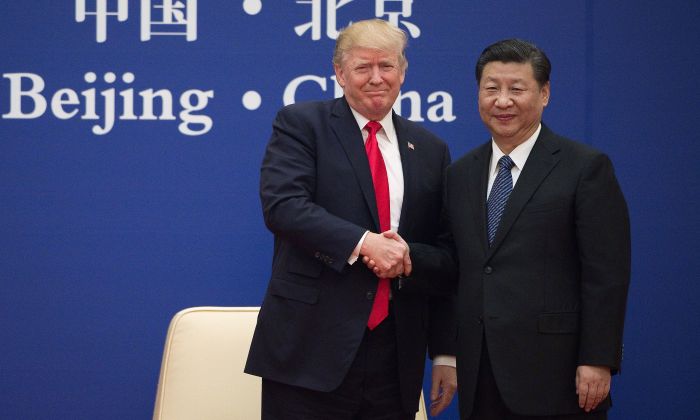
TRUMP ANNOUNCES TARIFF INCREASE ON CHINESE GOODS, CITING SLOW PROGRESS IN TRADE TALKS
Nicole Had

In a surprise announcement on Twitter, U.S. President Donald Trump said on May 5 that tariffs on $200 billion worth of Chinese goods will increase to 25 percent, from the current 10 percent, beginning May 10.
Trade negotiations between U.S. and Chinese officials had been continuing in hopes of reaching an agreement.
Trump added that an additional $325 billion worth of Chinese goods—the remainder of the total value of Chinese imports into the country—which currently don’t have duties, will have 25 percent tariffs imposed on them “shortly.”
Trump’s Tweets
In his Twitter post, Trump criticized the trade talks for progressing too slowly, “as they [China] attempt to renegotiate”—then capped off his message with an assertive “No!
For 10 months, China has been paying Tariffs to the USA of 25% on 50 Billion Dollars of High Tech, and 10% on 200 Billion Dollars of other goods. These payments are partially responsible for our great economic results. The 10% will go up to 25% on Friday. 325 Billions Dollars....
Trump’s decision comes as a shock, as many hoped that both sides could finalize an agreement by May 10, after China’s top trade envoy, Vice Premier Liu He, arrives in Washington with his delegation for the 11th round of trade talks on May 8.
Prospects looked positive after the 10th round of trade talks in Beijing concluded on May 1, after White House press secretary Sarah Sanders said in a statement: “Today, Ambassador Lighthizer and Secretary Mnuchin concluded productive meetings with China’s Vice Premier Liu He. The discussions remain focused toward making substantial progress on important structural issues and rebalancing the U.S.-China trade relationship.”
CNBC cited its own sources on May 1, that “U.S. and China may announce a trade deal by next Friday [May 10].”
Bloomberg also reported on May 5 that Liu’s visit to Washington “was expected to be a closing round of trade talks,” with Trump later deciding whether to meet with Chinese leader Xi Jinping to sign a pact.
A Tactic?
After Trump made his Twitter announcement, Tom Orlik, chief economist at Bloomberg, told the BBC in an interview that the move was likely a negotiation tactic.
“More likely, in our view, is that this renewed threat is an attempt to extract a few more minor concessions in the final days of talks,” he said.
The U.S.–China trade dispute kicked off in March 2018, when the Trump administration criticized the Chinese regime for its agenda of stealing intellectual property (IP) from U.S. companies, arguing that it damaged the U.S. economy.
The United States first imposed tariffs on $50 billion worth of Chinese goods as a punitive measure. The Chinese regime quickly retaliated with tariffs on roughly $34 billion worth of U.S. goods, mostly agricultural products.
The U.S. administration then imposed 10 percent tariffs on $200 worth billion of Chinese goods, ranging from chemicals to textiles and consumer goods, in September 2018.
The White House then gave a January 1 deadline for trade talks to succeed. If an agreement couldn’t be reached then, the administration would increase all tariffs to 25 percent.
But in December, on the sidelines of the G-20 summit, Trump and Xi agreed to a 90-day truce, in which Beijing promised to import more U.S. agriculture and energy products, and crack down on illegal fentanyl coming into the United States. Meanwhile, the U.S. side promised not to escalate the tariffs.
The negotiating period was prolonged in March after officials from both sides said trade talks reached a breakthrough.
U.S. officials have been seeking assurances from China that it would crack down on IP theft, end forced technology transfer policies, open its markets to American companies, and decrease the U.S.–China trade deficit by fair trade. Sources said the two sides were negotiating an enforcement mechanism to ensure China kept its promises.
So far, the trade dispute has cost the Chinese economy.
According to estimates in a May 5 Bloomberg report, U.S. tariffs have resulted in a 0.5 percent decrease in China’s GDP growth in 2019 thus far. Increasing the tariffs to 25 percent on $200 worth billion of Chinese goods would turn that figure to 0.9 percent, while imposing 25 percent tariffs on the rest of the $325 billion worth of goods would drag GDP growth down by 1.5 percent.
https://www.theepochtimes.com/trump-announces-tariff-increase-on-chinese-goods-citing-slow-progress-in-trade-talks_2907785.html